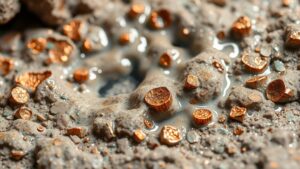The Use of Bow Drills for Sampling Hard Rock in Prehistoric Times
The Use of Bow Drills for Sampling Hard Rock in Prehistoric Times
The bow drill, an ancient tool primarily used for creating fire, also served a critical role in the geological exploration of hard rock in prehistoric times. This article explores the functionality, significance, and archaeological evidence surrounding the use of bow drills for sampling hard rock, lending insights into the technological advancements of early societies.
Understanding the Bow Drill
The bow drill consists of a flexible bow, a drill rod, a handhold, and a hearth board, and its operation is pivotal in creating friction-driven heat. While most commonly associated with fire-starting methods, its design allowed for high torque, enabling users to penetrate various materials, including hard rock.
Technological Significance
The versatility of the bow drill speaks to the ingenuity of prehistoric peoples. Its application for sampling hard rock can be understood through the following lenses:
- Efficiency: The bow drill permitted sustained energy transfer, making it easier to create holes in dense materials compared to handheld drills.
- Material Versatility: Employing various materials for the drill rod and hearth optimized the tool for specific rock types, enhancing its effectiveness.
- Adaptation: Early humans demonstrated adaptability in tool design, as evidenced by different cultural iterations of the bow drill across contexts.
Application in Hard Rock Sampling
The act of sampling hard rock involved drilling into geological formations to retrieve samples that could inform about mineral content and suitability for tool-making or trade. The miniaturization of this process via the bow drill can be illustrated through several ancient practices:
- Flint Tool Production: In regions rich with flint, bow drills were used to extract core samples, facilitating the creation of sharp tools which were essential for survival.
- Mineral Exploration: Early societies showed interest in copper and other minerals; the precision afforded by bow drills enabled extraction of small samples to assess ore concentrations.
Case Studies and Archaeological Evidence
Archaeological findings highlight the bow drill’s role in hard rock sampling:
- North American Tribes: Evidence from Native American archaeological sites indicates the use of bow drills to extract quartz and flint, enabling efficient tool creation.
- European Neolithic Cultures: Excavations have unearthed drill bits and hearth boards at sites linked to the manufacture of metal tools, indicating a transition toward more complex uses of the bow drill.
These case studies reveal how the bow drill helped prehistoric humans leverage their environment more effectively, either for immediate survival or long-term societal growth.
Challenges and Limitations
Despite its advantages, the bow drill also faced challenges:
- Material Failures: Inconsistent quality of materials used could lead to tool failure, making sampling unpredictable.
- Physical Demand: The technique required considerable physical strength and skill, potentially limiting its use among certain population groups.
These constraints underscore the importance of continued technological innovation, leading to the development of more efficient drilling methods over time.
Conclusion
The bow drill was not merely a tool for creating fire; it was a sophisticated instrument for sampling hard rock, pivotal to the daily lives of prehistoric societies. Its ability to facilitate mineral exploration and resource procurement underscores the role of technology in human history. Understanding its applications and limitations offers a clearer picture of how early humans adapted to and manipulated their environments, ultimately laying the groundwork for future advancements in tool-making and resource acquisition.
Actionable Takeaways
- Recognize the historical significance of primitive tools in shaping human society.
- Explore further how ancient technologies inform contemporary methods in geology and archaeology.
- Consider the importance of innovation stemming from resolving challenges in early human practices.

